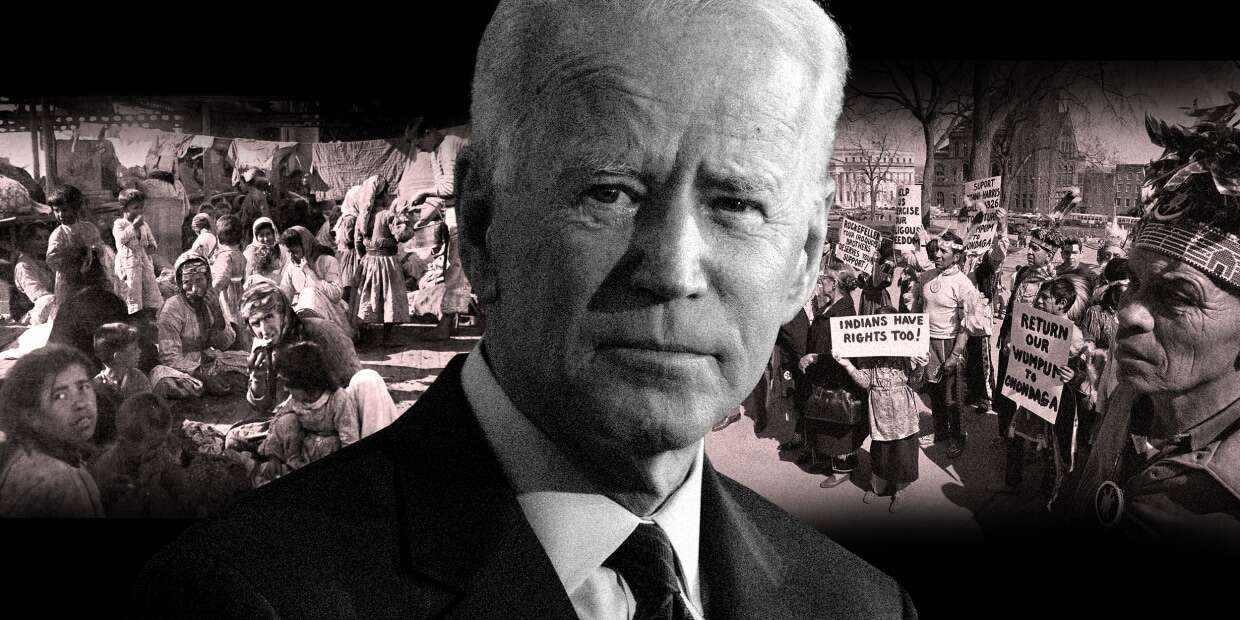
On 31 Jul 1800, Friedrich Wöhler was born, the German chemist who co-discovered an element, but is best known for his landmark accomplishment as the first chemist to create an organic compound from purely inorganic substances. Thus he united two disciplines formerly regarded as totally independent. This “Biographical Sketch of Frederick Wöhler” from The Popular Science Monthly (1880) will not only give you a comprehensive insight into his life and career, but should also impress you with the appetite of nineteenth century popular magazine readers for substantial science content.

He was born on 31 Jul 1919, and is remembered as an Italian novelist, short-story writer and poet. but Primo Levi was also a chemist most of his professional life. As a memoirist, he is noted for his restrained and moving autobiographical account of and reflections on survival in the Nazi concentration camps. Today's book pick is: The Periodic Table (Everyman's Library Contemporary Classics Series), by Primo Levi, his most famous book. In it, Primo Levi uses the elements as metaphors to create a cycle of linked, somewhat autobiographical tales, including stories of the Piedmontese Jewish community he came from, and of his response to the Holocaust.
With 4.5 out of 5 stars from approaching 100 reviewers, if you do nothing more than read their comments on the Amazon site, this book is well worthy of your attention. Your Webmaster has read and recommends it as an exquisite diversion from chemistry into profound stories from an all-too-real life. It is the kind of book your bookshelf has been waiting for! Here is one of the reviews, which tells you why I think it is charming to read, just for its own value as a reviewer’s personal anecdote:
I'd give it 6 stars if I could. By Jae Brodsky. When I was 14, my high school chemistry teacher gave my class a writing assignment, which really pissed us off. We were in a chemistry class, why did Mr. Ellison expect us to write a short story? It wasn't actually an entire story: the first half was already written for us. It was about the ‘adventures’ of one atom of carbon. I felt like I was reading a book for small children on molecular chemistry because the writing style was simple, with no extra flourishes and long, scientific phrases. How demeaning to 14 year old me! In any case, I went home and wrote a completely uninspired ending to the carbon-atom fairy tale. If I remember correctly, the rest of the class did the same thing. Some were better than others, but none of them even began to come close to the original ending.
Mr. Ellison took our mediocre stories and, in a bargain where we definitely got the better deal, gave us the end of Primo Levi's Carbon, the last chapter of The Periodic Table. Nothing had prepared me for it. That simple style that I had so despised the night before was in fact the work of a writer who had stripped off all of those unnecessary phrases that I had been looking for, who had left nothing but the unadorned truth. Struck by this, I went out and bought the book.
It consists of 21 chapters, each of which have an element of the periodic table as their themes. But in truth each chapter/story is based on one idea which is explored. Some stories are pure fiction, some are remembrances, and some are meditations. They range from family gatherings to amusing teenage chemistry mistakes to the threads that bind us all together. Levi was not only a gifted chemist and a gifted writer, but someone who had that rare talent of opening his personal philosophies to the reader, and you can't help but feel that you’ve gotten to know him by the end of the book, which certainly makes the read worth it.
It is available from Amazon, typically about New from $7.88. Used from $2.05. (As of earlier time of writing - subject to change.)
 | No research will answer all queries that the future may raise. It is wiser to praise the work for what it has accomplished and then to formulate the problems still to be solved. |
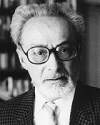 | Our atom of carbon enters the leaf, colliding with other innumerable (but here useless) molecules of nitrogen and oxygen. It adheres to a large and complicated molecule that activates it, and simultaneously receives the decisive message from the sky, in the flashing form of a packet of solar light; in an instant, like an insect caught by a spider, it is separated from its oxygen, combined with hydrogen and (one thinks) phosphorus, and finally inserted in a chain, whether long or short does not matter, but it is the chain of life. All this happens swiftly, in silence, at the temperature and pressure of the atmosphere, and gratis: dear colleagues, when we learn to do likewise we will be sicut Deus [like God], and we will have also solved the problem of hunger in the world. |
 | I tell young people to reach for the stars. And I can't think of a greater high than you could possibly get than by inventing something. |
| Before you look at today's web page, see if you can answer some of these questions about the events that happened on this day. Some of the names are very familiar. Others will likely stump you. Tickle your curiosity with these questions, then check your answers on today's web page. | |
| Births | |
 | Theobald Smith, born 31 Jul 1859, was an American microbiologist and pathologist who discovered the causes of several infectious and parasitic diseases. He is often considered the greatest American bacteriologist. In 1892 he linked Texas cattle fever with a protozoan parasite spread by blood-sucking arthropods. At the time, many scientists were skeptical that disease would be spread by bloodsucking insects. However, the precedent was established for other scientists to make links in cases of other diseases spread by insects. Which insect did Smith identify in the spread of Texas Cattle Fever? |
 | Friedrich Wöhler, born 31 Jul 1800, was a German chemist who co-discovered a new element. Having studied first medicine, then mineralogy, it was chemistry that became his primary interest. He found a method in 1827 for the production of metallic aluminum in the form of a grey powder by heating aluminum chloride with potassium. In 1828, he succeeded in the isolation of beryllium as a black-grey powder as well as of yttrium and (1856) crystalline silicon. His is most well-known for the synthesis of urea from ammonium cyanate (1828), which created an organic compound from an inorganic one, showing there was no absolute distinction between the two areas of chemical study. In 1862, he produced acetylene from calcium carbide. Not named above, can you identify another new element he co-discovered? |
 | On 31 Jul 1923, Stephanie Kwolek was born, an American chemist who worked in DuPont’s textile fibers department. She invented a new high-performance fiber that would be acid- and base-resistant and stable at high temperatures, suitable to replace steel in radial tyres. In fact, the fibre she developed was five times stronger than steel and had half the density of fiberglass. It is used to make bullet-proof jackets, military helmets, aircraft parts, inflatable boats, gloves, rope, and building materials. What is the name of the fiber that Kwolek invented? |
| Deaths | |
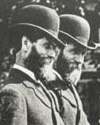 | Francis Edgar Stanley (1849-1918) was an American inventor, who with his twin brother Freeman, were famous manufacturers of automobiles. Francis previously had invented a photographic dry-plate process (1883), and as the Stanley Dry Plate Company the brothers had engaged in the manufacturing of the plates. They sold the company to Eastman Kodak in 1905, as their interest had turned to automobiles. At racing events, they often competed successfully against gasoline powered cars. What powered the engines of Stanley cars? |
| Events | |
 | On 31 July 1790, the first U.S. patent was granted to Samuel Hopkins of Vermont for a process for making potash and pearl ashes. Potash was used as an ingredient in soap and fertilizer. The patent was granted for a term of 14 years and signed by George Washington. When this patent was issued, what number was printed upon it? |
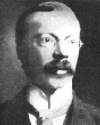 | On 31 Jul 1910, a murderer and his mistress were arrested after the first use of Marconi radio telegraph signals in a murder case. The man was fleeing after murdering his wife in England. They were spotted on board a ship making a transatlantic voyage. It was the first ship to be fitted with radio-telegraph, and the Captain first used it on 22 Jul 1910 to notify London Police of his “strong suspicions.” The suspects were apprehended when the ship docked in Canada. What was the name of this infamous murderer? |
Fast answers for the previous newsletter for July 30: electron microscope • Henry Ford • seismograph • William and John Kellogg • Winton Motor Car Company.
 If you enjoy this newsletter, the website, or wish to offer encouragement or ideas, please send feedback by using your mail reader Reply button.
If you enjoy this newsletter, the website, or wish to offer encouragement or ideas, please send feedback by using your mail reader Reply button. Your click on a Facebook, StumbleUpon, or other social button on the site webpages is also a welcome sign of appreciation. Thank you for using them.
© This newsletter is copyright 2020 by todayinsci.com. Please respect the Webmaster's wishes and do not put copies online of the Newsletter — or any Today in Science History webpage. (If you already have done so, please remove them. Thank you.) Offline use in education is encouraged such as a printout on a bulletin board, or projected for classroom viewing. Online, descriptive links to our pages are welcomed, as these will provide a reader with the most recent revisions, additions and/or corrections of a webpage. For any other copyright questions, please contact the Webmaster by using your mail reader Reply button.
--
If you do not want to receive any more newsletters, Unsubscribe
To update your preferences and to unsubscribe visit this link
Friday
Newsletter for Friday 30 July.

On 30 Jul 1916, Albert Neisser died, the German microbiologist who was the first to isolate and identify Bacillus lepræ, the causal agent of leprosy. His life had some close parallels to that of Paul Ehrlich (who is better known from being a Nobel Prize winner). Both were syphilologists of distinction, both were born in Silesia of Jewish descent and were educated at Breslau for medical careers, and their lifespans covered almost the same years.
Where we stand today is the result of contributions from many diligent scientists. Albert Neisser is probably not one whose name you know. Which means a look at this brief Obituary of Albert Neisser will fill in some gaps in your knowledge.

On 30 Jul 1889, Vladimir Zworykin was born, the Russian-American physicist and electronics engineer who is rightly known as “the Father of Television.” The television is a commonplace object in our lives now, and only the oldest people alive today will remember its development from a small black and white screen. But central to its development was a method of painting an image by scanning an electron beam in lines across a screen. A similar scanning system was needed to make a television camera to produce the video signal.
Today's book pick is: Zworykin, Pioneer of Television, by Albert Abramson, a retired TV engineer, who describes Zworykin as the RCA’s technical guru, the brilliance of his innovations, and the competitive environment in the industry. The author states, “his achievements rank him with Thomas Edison and Alexander Graham Bell,” Yet his name remains relatively obscure, even though he “did more to create our present system of cathode-ray television than any other person.” Like so many other inventions in our modern lives, there is a fascinating history of how they came to be. Zworkin deserves your recognition, and this book will inform you of his life’s work.
It is available from Amazon, typically about New from $48.09. Used from $3.05. (As of earlier time of writing - subject to change.)
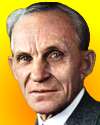 | Mr Edison gave America just what was needed at that moment in history. They say that when people think of me, they think of my assembly line. Mr. Edison, you built an assembly line which brought together the genius of invention, science and industry. |
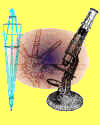 | The extracellular genesis of cells in animals seemed to me, ever since the publication of the cell theory [of Schwann], just as unlikely as the spontaneous generation of organisms. These doubts produced my observations on the multiplication of blood cells by division in bird and mammalian embryos and on the division of muscle bundles in frog larvae. Since then I have continued these observations in frog larvae, where it is possible to follow the history of tissues back to segmentation. |
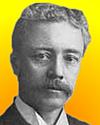 | Scientific training gives its votaries freedom from the impositions of modern quackery. Those who know nothing of the laws and processes of Nature fall an easy prey to quacks and impostors. Perfectionism in the realm of religion; a score of frauds in the realm of medicine, as electric shoe soles, hair brushes and belts, electropises, oxydonors, insulating bed casters, and the like; Christian science. In the presence of whose unspeakable stillness and self-stultifying idealism a wise man knows not whether to laugh or cry; Prof. Weltmer's magnetic treatment of disease; divine healing and miracle working by long-haired peripatetics—these and a score of other contagious fads and rank impostures find their followers among those who have no scientific training. Among their deluded victims are thousands of men and women of high character, undoubted piety, good intentions, charitable impulses and literary culture, but none trained to scientific research. Vaccinate the general public with scientific training and these epidemics will become a thing of the past. |
| Before you look at today's web page, see if you can answer some of these questions about the events that happened on this day. Some of the names are very familiar. Others will likely stump you. Tickle your curiosity with these questions, then check your answers on today's web page. | |
| Births | |
 | On 30 Jul 1889, Vladimir Zworykin was born, a Russian-American physicist and electronics engineer who is known as “the Father of Television.” He developed the electronic scanning cathode ray tube that made television practical as we first knew it. What device do research scientists now use that incorporate Zworykin innovations extending from his television technology? |
 | On 30 Jul 1863, an American inventor was born in Dearborn, Mich. He first experimented with internal combustion engines while he was an engineer with the Edison Illuminating Company. In 1903, he incorporated a company that within a few years had revolutionized his industry. He innovated with precision manufactured parts designed to be standardized and interchangeable parts. Production was increased using a continuous moving assembly line. Can you name this inventor? |
| Deaths | |
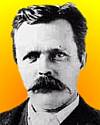 | John Milne (1850-1913) was an English geologist who is known as the “Father of Modern Seismology.” It was because of his efforts that the first practical, worldwide net of earthquake monitoring stations were established. What did Milne invent? |
| Events | |
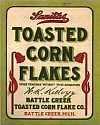 | On 30 Jul 1898, Corn Flakes were invented at Battle Creek Sanitarium. The Sanitarium superintendent and his younger brother and business manager invented many grain-based foods, including a coffee substitute, a type of granola, and peanut butter to provide patients a strict nutritious diet. Can you name these inventors? |
 | On 30 Jul 1898, Scientific American carried the first magazine automobile advertisement to “dispense with a horse” this day. The cars were expensive, purchased by the upper-middle-class, a market which the company lost to competition, and closed in 1924. Which automobile company placed this advertisement? |
Fast answers for the previous newsletter for July 29: ballpoint pen • safety pin • X-ray crystallography • Law of Octaves • iron lung • the decade including the year 1920.
 If you enjoy this newsletter, the website, or wish to offer encouragement or ideas, please send feedback by using your mail reader Reply button.
If you enjoy this newsletter, the website, or wish to offer encouragement or ideas, please send feedback by using your mail reader Reply button. Your click on a Facebook, StumbleUpon, or other social button on the site webpages is also a welcome sign of appreciation. Thank you for using them.
© This newsletter is copyright 2020 by todayinsci.com. Please respect the Webmaster's wishes and do not put copies online of the Newsletter — or any Today in Science History webpage. (If you already have done so, please remove them. Thank you.) Offline use in education is encouraged such as a printout on a bulletin board, or projected for classroom viewing. Online, descriptive links to our pages are welcomed, as these will provide a reader with the most recent revisions, additions and/or corrections of a webpage. For any other copyright questions, please contact the Webmaster by using your mail reader Reply button.
--
If you do not want to receive any more newsletters, Unsubscribe
To update your preferences and to unsubscribe visit this link
Power off and play this summer!
|
Executive Real Estate Business Class
-
55 Weird Photos From History That Have Even More Baffling Backstories Wh...
-
55 Creepy Photos From The Darkest Recesses Of Human History From the Fre...
-
With an 8-foot wingspan and flight speeds of 50 miles per hour, the Haast's eagle was said to hunt down and kill humans. ...
About the publisher
Search This Blog
Blog Archive
-
▼
2021
(585)
-
▼
July
(50)
- Newsletter for Saturday 31 July.
- Newsletter for Friday 30 July.
- Power off and play this summer!
- Newsletter for Thursday 29 July.
- Newsletter for Wednesday 28 July.
- Newsletter for Tuesday 27 July.
- Newsletter for Monday 26 July.
- Newsletter for Sunday 25 July.
- Newsletter for Saturday 24 July.
- Newsletter for Friday 23 July.
- Newsletter for Thursday 22 July.
- Newsletter for Wednesday 21 July.
- Newsletter for Tuesday 20 July.
- Newsletter for Monday 19 July.
- The Machines That Built America Premieres Tonight
- Newsletter for Sunday 18 July.
- Newsletter for Saturday 17 July.
- Newsletter for Friday 16 July.
- Newsletter for Thursday 15 July.
- Newsletter for Wednesday 14 July.
- Newsletter for Tuesday 13 July.
- On This Day for July 12 - Geraldine Ferraro design...
- Newsletter for Monday 12 July.
- Inventing ‘The Machines That Built America’
- On This Day for July 11 - Duel between Aaron Burr ...
- Newsletter for Sunday 11 July.
- On This Day for July 10 - Telstar 1 launched, John...
- Newsletter for Saturday 10 July.
- On This Day for July 9 - Catherine the Great assum...
- Newsletter for Friday 9 July.
- New Season! Hope, Through History Podcast
- On This Day for July 8 - Vasco da Gama's first voy...
- Newsletter for Thursday 8 July.
- Ending soon: savings that pop! 🎆
- On This Day for July 7 - Hawaiian Islands annexed ...
- Newsletter for Wednesday 7 July.
- On This Day for July 6 - Anne Frank forced into hi...
- Newsletter for Tuesday 6 July.
- On This Day for July 5 - Israel's Law of Return pa...
- Newsletter for Monday 5 July.
- On This Day for July 4 - Declaration of Independen...
- Newsletter for Sunday 4 July.
- July 4th Sale at the HISTORY Store!
- On This Day for July 3 - Battle of Gettysburg ende...
- Newsletter for Saturday 3 July.
- On This Day for July 2 - Civil Rights Act signed, ...
- Newsletter for Friday 2 July.
- July 4th savings that pop!
- On This Day for July 1 - Dominion of Canada establ...
- Newsletter for Thursday 1 July.
-
▼
July
(50)
-
Blogroll
-
About
HistoryFact





